 The decision to start playing the guitar is both a daunting and an invigorating proposition.
The decision to start playing the guitar is both a daunting and an invigorating proposition.
Even after learning some of the fundamentals of how to play the guitar, there are often many important features of the instrument that are still unclear. In this blog post I will discuss some of the key components to consider when purchasing a guitar, so you can can choose the right model—whether for a beginner or for someone that is already playing and is ready for an upgrade.
What to look for when buying a guitar
When it comes to guitars, while there are many overarching themes and expectations, there really aren’t too many hard-set rules. For every guitar “rule” you will encounter, there is invariably an exception to that rule. For example, if I were to say that guitars come with 6 strings or 12 strings, that is mostly true. However, you can also buy a guitar with 7 or 8 strings and increasingly in some genres of music, that may be the preferred configuration. So, while I discuss the basics that need to be considered and remembered when you are deciding which guitar will best meet your needs, make sure to remember none of this is set in stone. Frankly, it has been those players that don’t strictly adhere to expectations or convention that are responsible for the innovation and originality that amazes and delights us all.
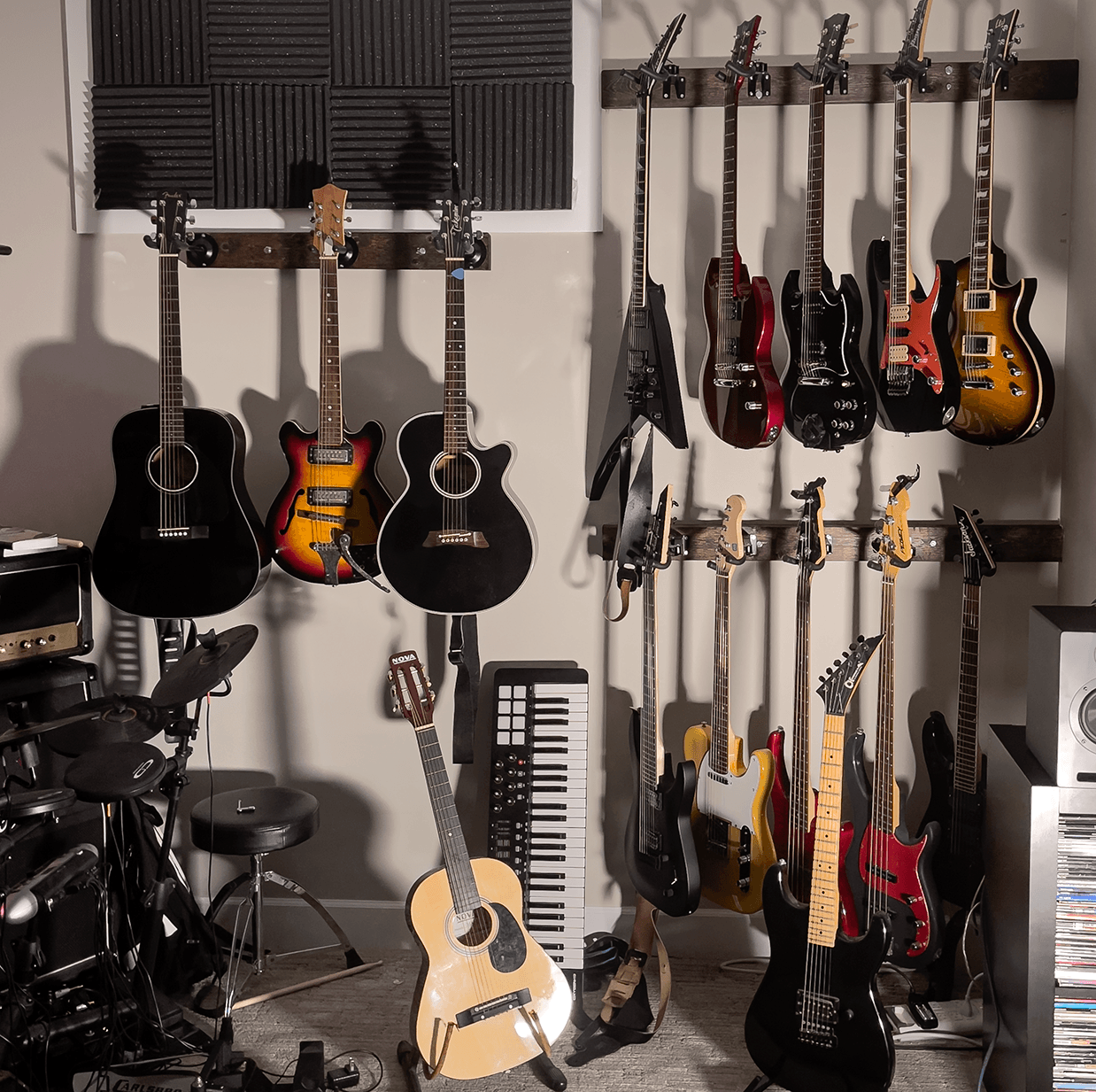
Types of guitars
Guitars will fall into one of two categories, electric or acoustic. Even that is an oversimplification as there are hybrid models (generally called an electric acoustic or acoustic electric) that can be played acoustically or with amplification so immediately, we see the porous nature of these types of barriers or categories. I’ll go over the main types to help you choose the right one for you.
Acoustic guitars
At its core, a true acoustic guitar has no electronic components (although you can add an acoustic pickup later if desired). An acoustic guitar has a large hollow body and an opening underneath the strings. This opening is the sound hole and when you strum or pluck strings, the vibration of those strings resonate inside the body of the guitar and is projected out through the sound hole which is what we will ultimately hear. Almost every component in this process from the type of strings on the guitar to what wood is used in the construction of the guitar will affect the sound we hear.
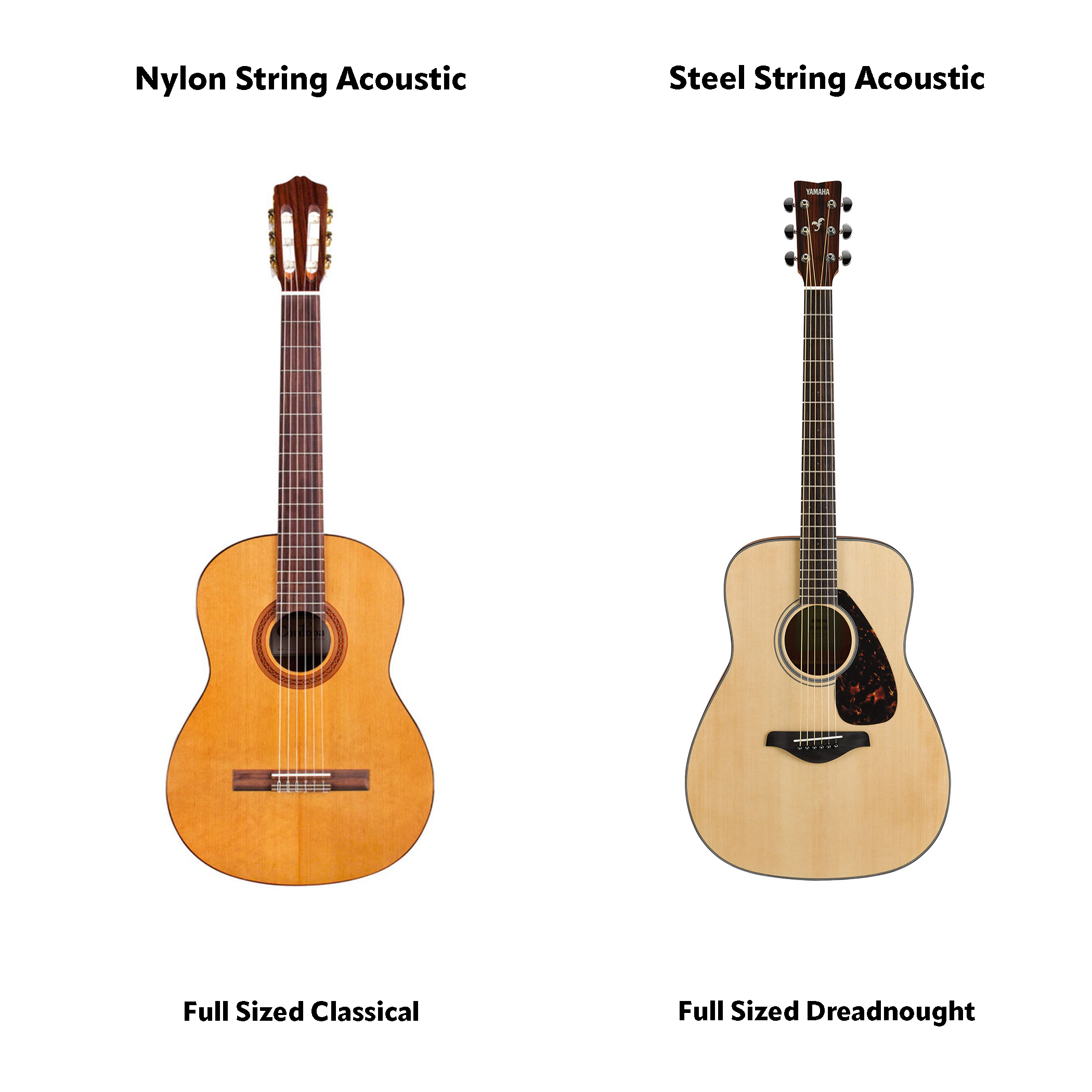
Nylon string vs steel strings acoustic guitars
You can get an acoustic guitar with either nylon strings or steel strings. The composition of the guitar’s strings has a significant bearing on the sound produced. Each string on a guitar is of a different gauge (thickness) and tension which is why they each produce a specific note. It is the frequency of the vibration from each string that creates these tones.
Nylon string acoustic guitars
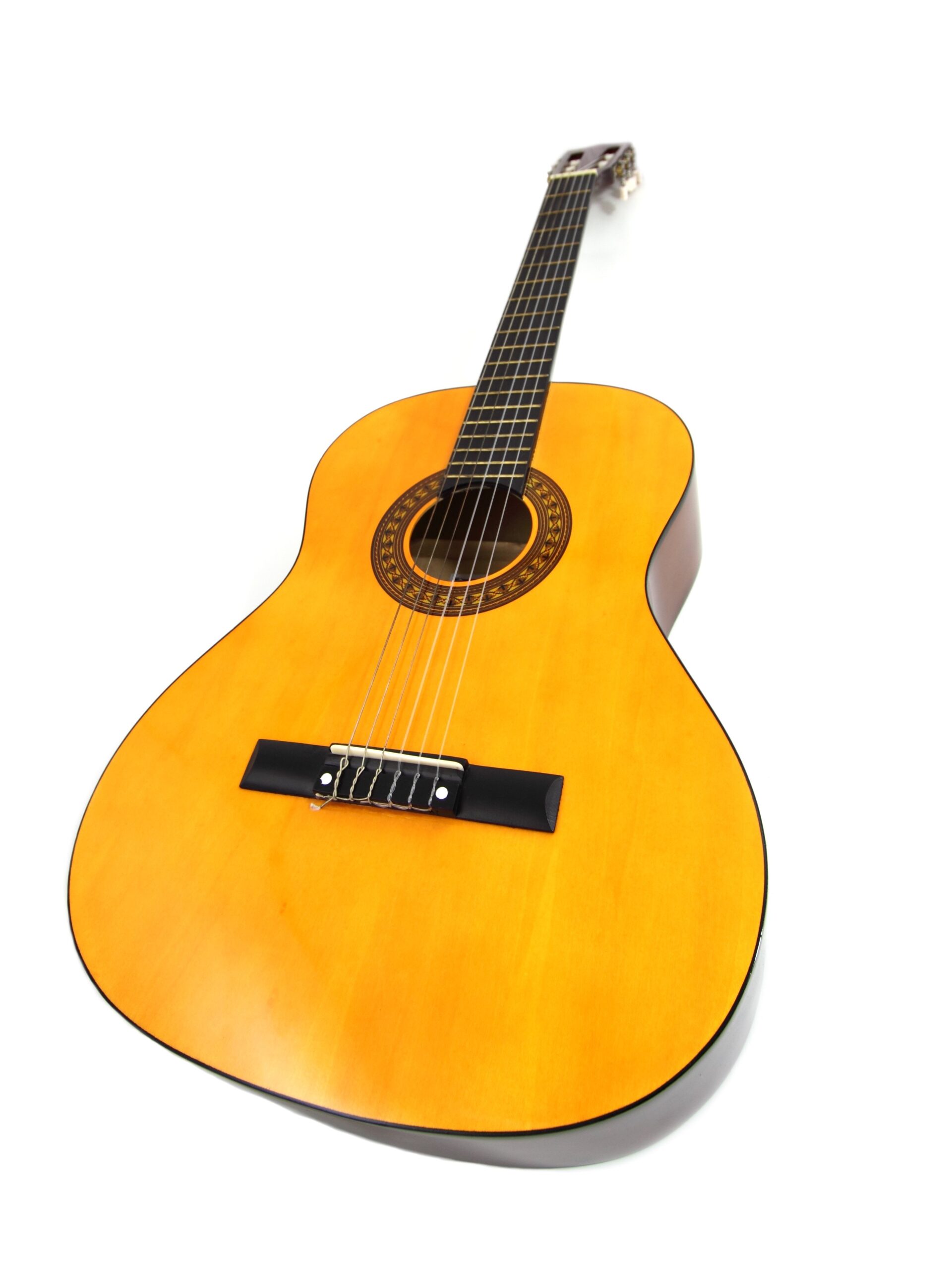 A nylon stringed acoustic guitar (often also called a classical guitar) is famously used in styles as diverse as 60s folk music or flamenco music but can be heard in virtually every genre of music. On a traditional 6 string acoustic classical guitar, there are only 3 strings that are visibly made from nylon. The larger bottom 3 strings do have a nylon core but they are generally wrapped with bronze or copper.
A nylon stringed acoustic guitar (often also called a classical guitar) is famously used in styles as diverse as 60s folk music or flamenco music but can be heard in virtually every genre of music. On a traditional 6 string acoustic classical guitar, there are only 3 strings that are visibly made from nylon. The larger bottom 3 strings do have a nylon core but they are generally wrapped with bronze or copper.
I learned to play guitar on a nylon stringed classical guitar and one advantage is that the strings are under less tension than on their steel stringed counterparts. This makes it easier to depress the strings on the fretboard and is less taxing on your fingers. One of the early frustrations with learning guitar is that it can hurt your fingers until you have developed appropriate callouses. It may hurt less learning with nylon strings than with steel strings.
Classical acoustic guitars do have a larger neck (wider and thicker) than steel stringed acoustic guitars. As such, it may be difficult to manoeuvre the fretboard if you have smaller hands. The term classical guitar also refers to the style of playing and features more finger picking although this guitar is limitless in musical stylings and can be used to play almost anything. Due to the wider neck, there is more distance between strings and this does allow you more intricacies in picking strings without hitting adjacent strings.
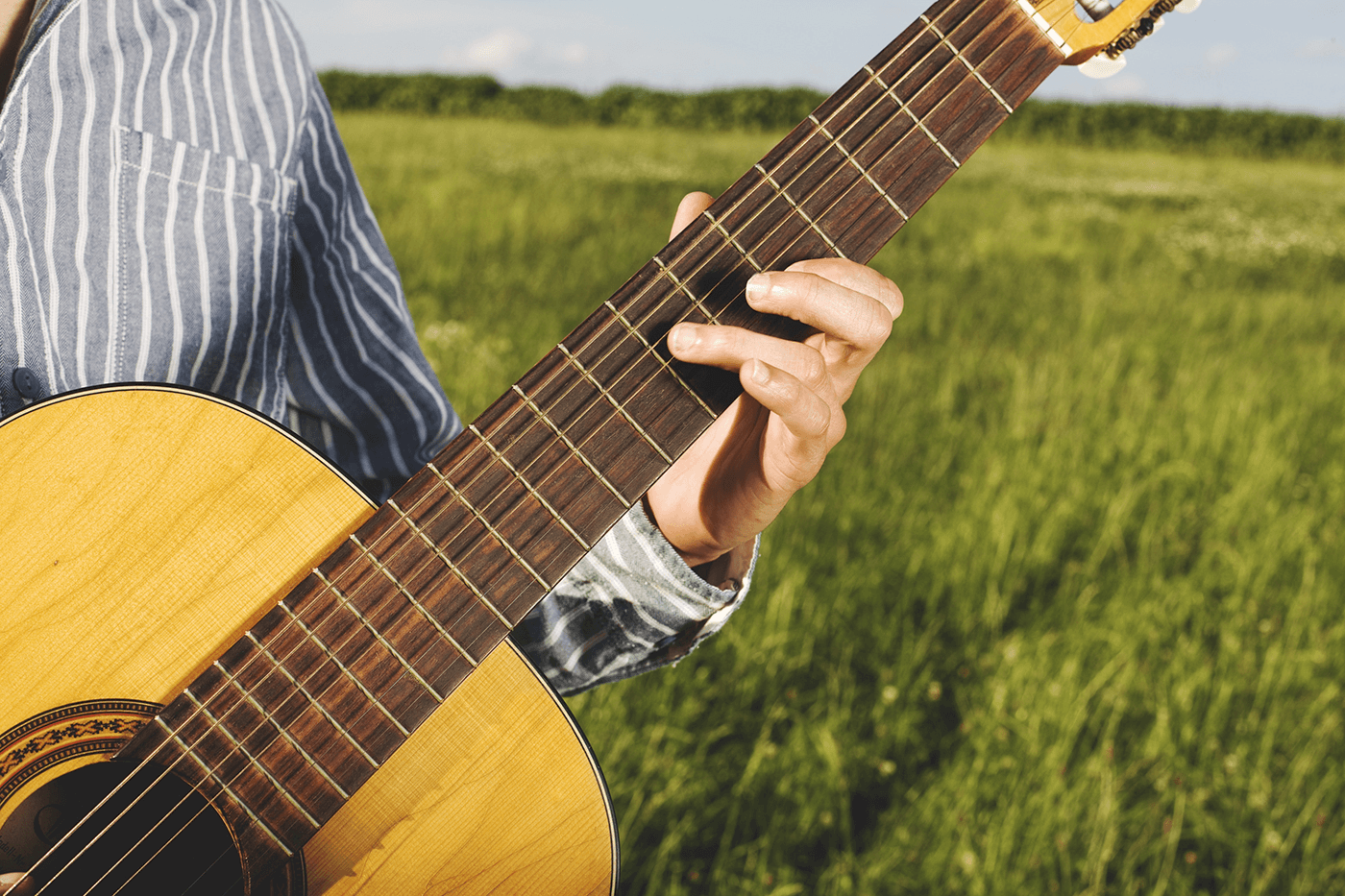 The sound is full, warm, and smooth. For an example of one of my favourite classical guitar players, and my first guitar hero, hit YouTube and search for Liona Boyd. If you are thinking “but all I want to do is shred!”, then I suggest you once again hit up YouTube because you’ve not seen shredding until you’ve seen Paganini’s Caprice No. 24 played with finger picked arpeggios on a nylon stringed guitar. Think an acoustic guitar with nylon strings can’t be “heavy”? Think again and check out the duo Rodrigo y Gabriela as they cover Metallica songs.
The sound is full, warm, and smooth. For an example of one of my favourite classical guitar players, and my first guitar hero, hit YouTube and search for Liona Boyd. If you are thinking “but all I want to do is shred!”, then I suggest you once again hit up YouTube because you’ve not seen shredding until you’ve seen Paganini’s Caprice No. 24 played with finger picked arpeggios on a nylon stringed guitar. Think an acoustic guitar with nylon strings can’t be “heavy”? Think again and check out the duo Rodrigo y Gabriela as they cover Metallica songs.
Steel string acoustic guitars
When most people think about an acoustic guitar, they imagine the traditional steel stringed version. This guitar covers the full gamut of musical styles from blues and classic rock to country, bluegrass, rock, and pop music. As you might surmise from the genres covered, there is a large variety of techniques that can be played on a steel string acoustic guitar. You can finger pick, strum, tap, slide, and more. The list is seemingly endless. One advantage this guitar type has over its classical nylon stringed sibling is the thinner neck which makes it easier to play although the increased string tension isn’t exactly finger friendly. It is something that you will have to work through regardless but it does get better over time.
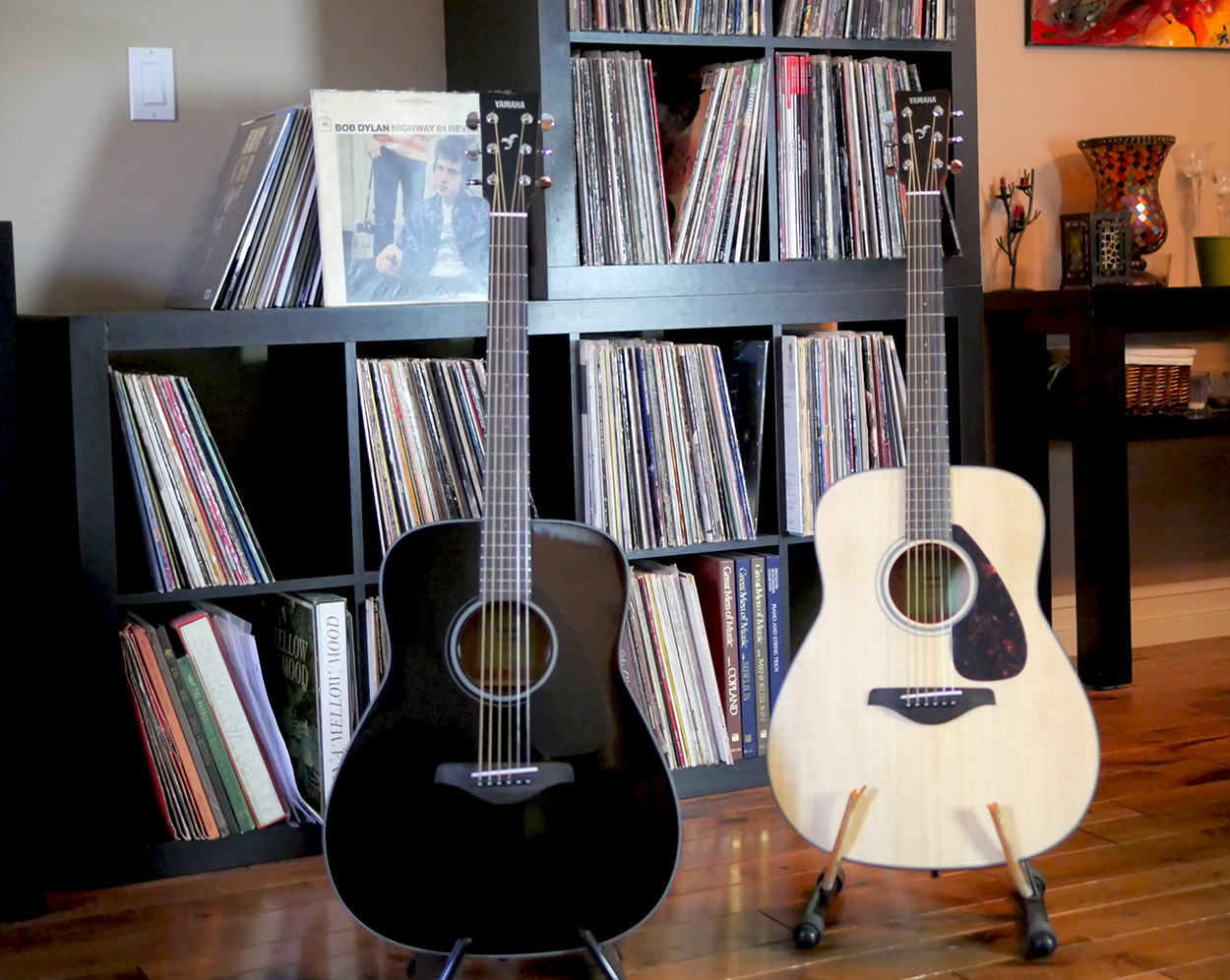 The six string acoustic is the most universal version of this steel string guitar although there are also 12 string variations. With a 12 string, the traditional 6 strings are simply doubled. Some in unison while others are tuned an octave apart. This produces an incredibly thick shimmering tone that makes strummed chords big and engaging. You can also play with other tunings that will introduce an entirely new way of thinking about and playing guitar. This may be more of an advanced idea, but is shows that you can expand your guitar skills with this type of guitar. A 12-string guitar also has a wider neck to accommodate the extra strings and should be instantly identifiable due to the numerous tuning pegs on the larger headstock.
The six string acoustic is the most universal version of this steel string guitar although there are also 12 string variations. With a 12 string, the traditional 6 strings are simply doubled. Some in unison while others are tuned an octave apart. This produces an incredibly thick shimmering tone that makes strummed chords big and engaging. You can also play with other tunings that will introduce an entirely new way of thinking about and playing guitar. This may be more of an advanced idea, but is shows that you can expand your guitar skills with this type of guitar. A 12-string guitar also has a wider neck to accommodate the extra strings and should be instantly identifiable due to the numerous tuning pegs on the larger headstock.
Electric acoustic guitars
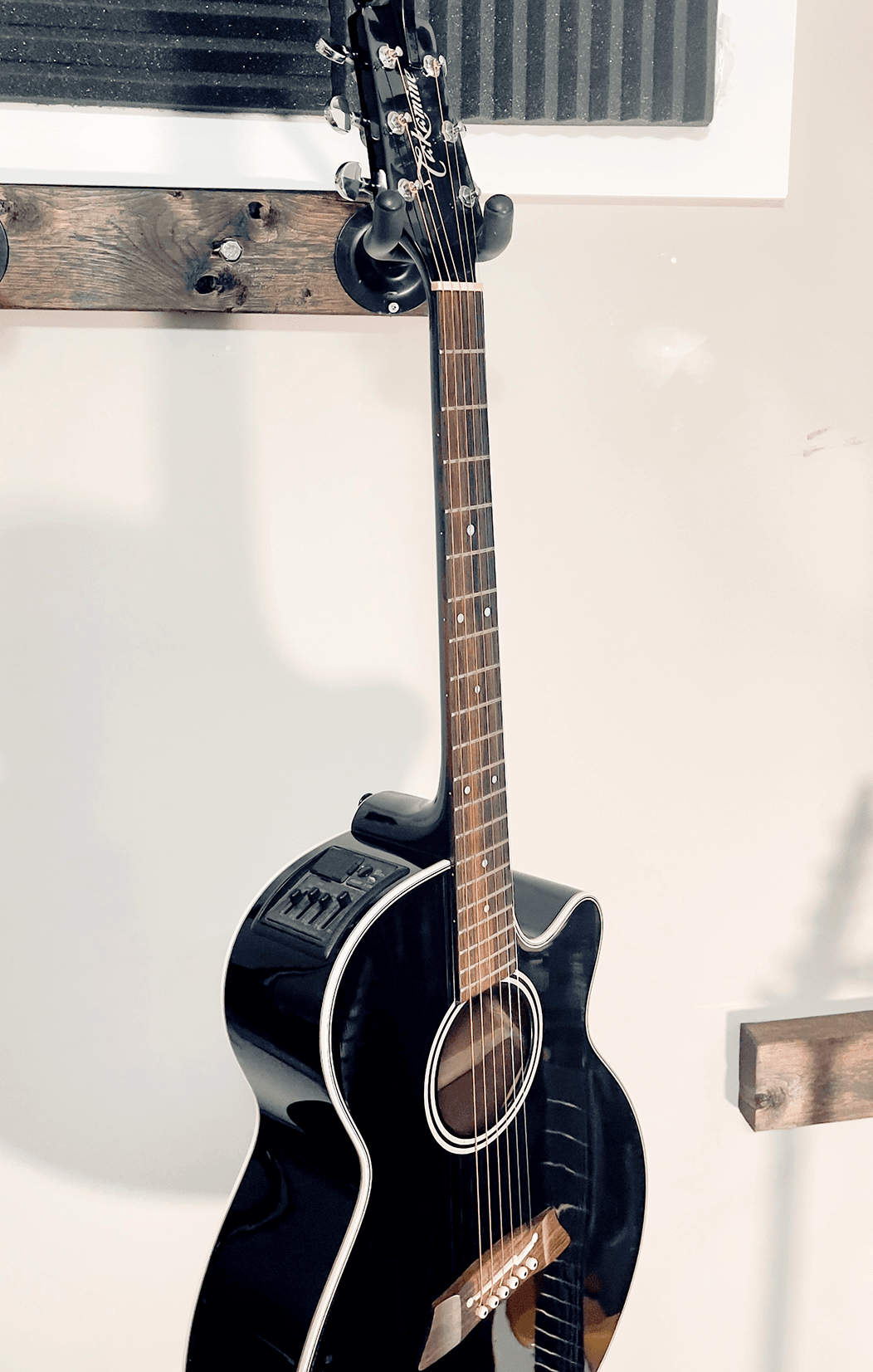 At first glance, electric acoustic guitars might look like acoustic guitars. Closer inspection however will highlight the fact that this acoustic has some form of electronics to amplify the sound. It may be a traditional acoustic that has an attached pickup or a true hybrid that has the electronics built-in. You can play it as a regular acoustic with the only sound coming from the body through the sound hole, or you can plug it into an amplifier, mixer, or PA system. It does provide options beyond having to place a microphone in front of the sound hole. This guitar is nice because you can play it around a campfire or on a stage in front of thousands of people. One thing to remember is that the acoustic sound is not exactly the same as the amplified sound but you can sculpt it accordingly thanks to the electronics.
At first glance, electric acoustic guitars might look like acoustic guitars. Closer inspection however will highlight the fact that this acoustic has some form of electronics to amplify the sound. It may be a traditional acoustic that has an attached pickup or a true hybrid that has the electronics built-in. You can play it as a regular acoustic with the only sound coming from the body through the sound hole, or you can plug it into an amplifier, mixer, or PA system. It does provide options beyond having to place a microphone in front of the sound hole. This guitar is nice because you can play it around a campfire or on a stage in front of thousands of people. One thing to remember is that the acoustic sound is not exactly the same as the amplified sound but you can sculpt it accordingly thanks to the electronics.
Electric guitars
 Electric guitars have been the cornerstone of rock music for decades and are increasingly the first thing people visualize when thinking of a guitar. Ever since early jazz guitarists employed amplification of their vibrating strings so that they could play with big bands, players have been perfecting the instrument itself as well as ways to play it. From early legends like Les Paul or T-Bone Walker through to the birth of 50s rock, and forward to today, the electric guitar is now an essential instrument.
Electric guitars have been the cornerstone of rock music for decades and are increasingly the first thing people visualize when thinking of a guitar. Ever since early jazz guitarists employed amplification of their vibrating strings so that they could play with big bands, players have been perfecting the instrument itself as well as ways to play it. From early legends like Les Paul or T-Bone Walker through to the birth of 50s rock, and forward to today, the electric guitar is now an essential instrument.
I truly believe that there are few things in life that can compare to the feeling you get when you strum a power chord and hear some distorted behemoth of a sound rumble out of your amp’s speakers. As there is no hollow body on (most) electric guitars, you do not have the volume of an acoustic when simply playing without plugging in. You can hear what you are playing as the strings still vibrate, but you do not have any appreciable volume. Thus, an electric guitar needs some form of amplification to really shine. You can also add guitar effects like echo, delay, chorus, or distortion to further create that amazing sound you hear in your head. The electric guitar is used in almost every style or genre of music but is certainly thought of with the country/blues/jazz/rock/metal/punk genres.
Types of guitar woods
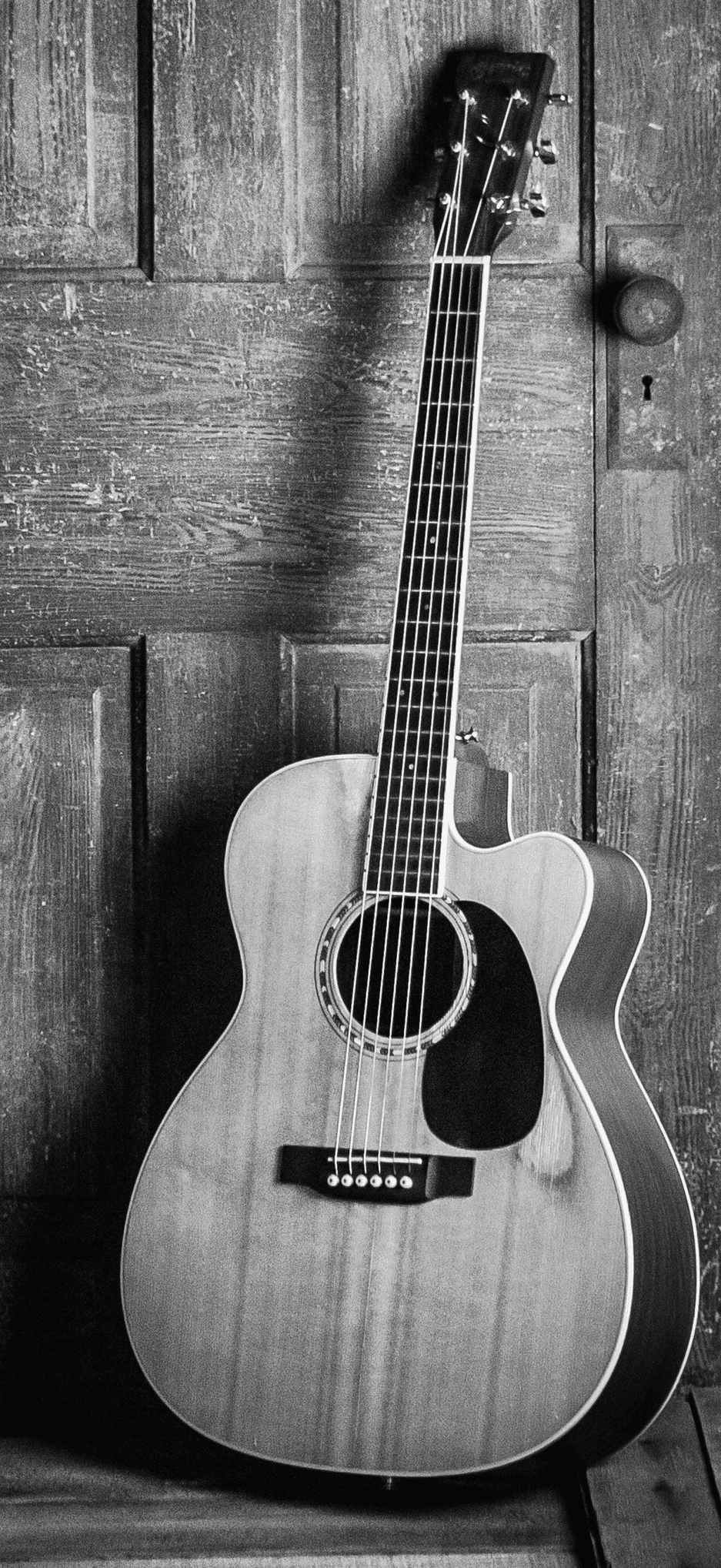 Guitars can be made of different wood types. They are generally referred to as body woods, fingerboard woods, and neck woods. The type of wood used will have an effect on the looks, playability, and tone of your guitar. I will briefly cover the most popular types but for a beginner or intermediate player, don’t focus too much on this feature as not everyone agrees on exactly what each wood type means and how it makes your overall guitar sound and look.
Guitars can be made of different wood types. They are generally referred to as body woods, fingerboard woods, and neck woods. The type of wood used will have an effect on the looks, playability, and tone of your guitar. I will briefly cover the most popular types but for a beginner or intermediate player, don’t focus too much on this feature as not everyone agrees on exactly what each wood type means and how it makes your overall guitar sound and look.
You usually have one wood for the neck of the guitar, for example maple, with another wood like ebony overlaid on the maple. This is the wood you see from the front, that your hand interacts with, and that houses the frets. You can have the same wood for both, for example a rosewood neck and rosewood fingerboard, but it isn’t that common.
The primary wood used in many acoustic guitars, at least for the sides and the back of the guitar’s body, is mahogany. Mahogany is relatively inexpensive, can withstand a lot, looks good, and is a resonant wood. Other popular wood types are alder, ash, basswood, walnut, maple, and rosewood among many others. Alder is popular for electric guitar bodies as it isn’t too heavy, produces beefy tones, and looks good when painted.
While each wood has a tonal quality, remember that it is still just a part of the entire sound package. Strings, picks, technique, amps, effects, and the like all have a say in your sound. Most affordable guitars are made from more affordable wood. Simple as that. The wood used probably matters more for an acoustic than an electric guitar anyway. This is not to say that wood type does not matter for an electric guitar, it just likely matters less to the overall tone because of things like amplifiers and effects which allow you to really sculpt a specific sound. You should always try out several different guitars when looking to purchase one. Make notes of what woods they are constructed from and you may find that there is a particular wood that best suits your ears.
Choosing the correct size
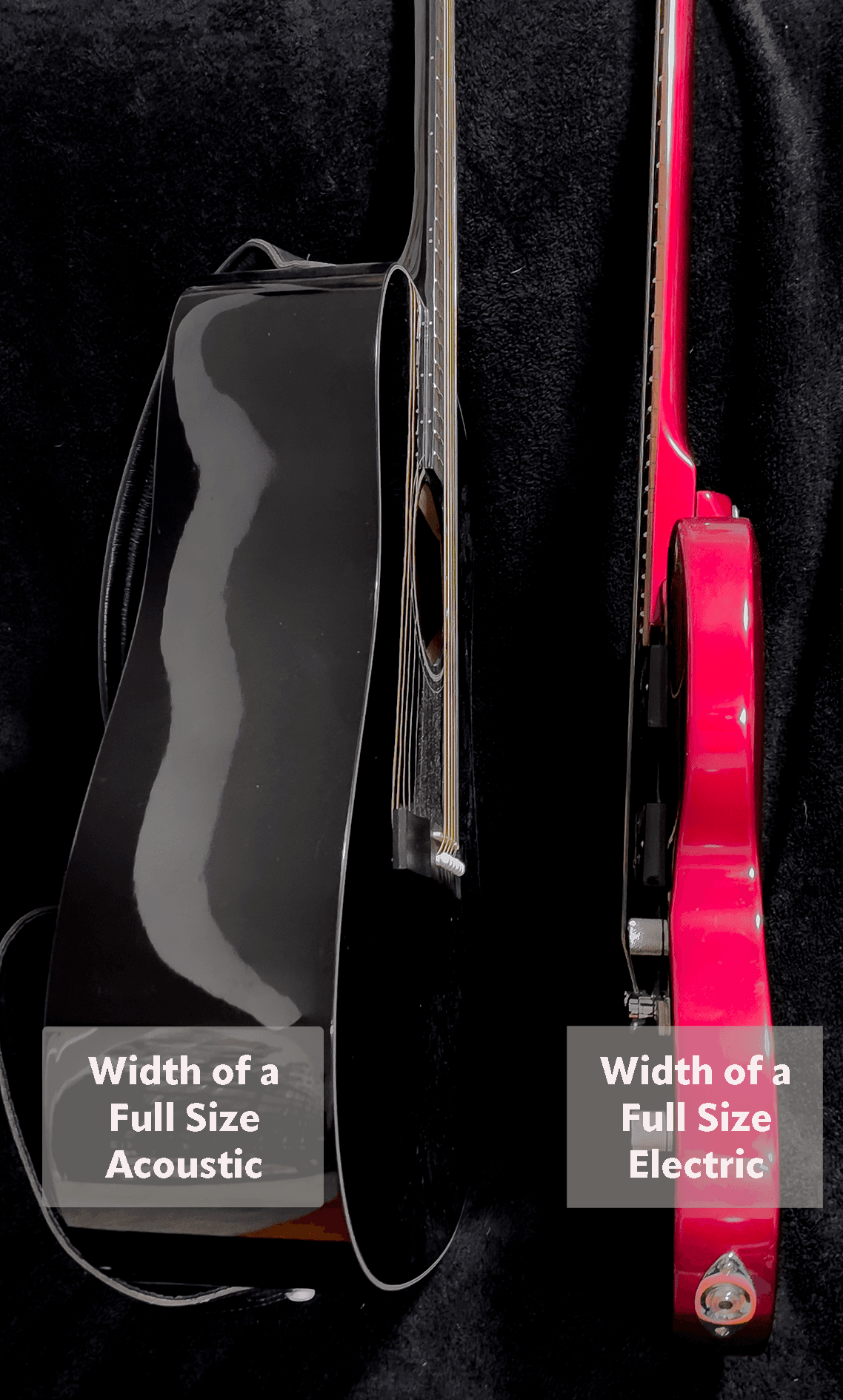 Size is also a significant consideration when selecting a guitar. If the new guitarist is younger and has smaller hands, it will likely be much easier for them to learn on a guitar smaller than traditional full size. This can get confusing as each style of guitar, classical acoustic or dreadnought acoustic, have their own unique standard sizing. Acoustic guitars have a bracing system inside the body that supports the front, back, and sides while creating an overall stability to the guitars structure. As you can imagine, this takes up a lot of space and as such, acoustic guitars are significantly wider than electric guitars. Electric guitars are also available in different sizes but as the bodies are significantly thinner than acoustic guitars, it may not be as significant of an issue although the neck may feel quite long for smaller people.
Size is also a significant consideration when selecting a guitar. If the new guitarist is younger and has smaller hands, it will likely be much easier for them to learn on a guitar smaller than traditional full size. This can get confusing as each style of guitar, classical acoustic or dreadnought acoustic, have their own unique standard sizing. Acoustic guitars have a bracing system inside the body that supports the front, back, and sides while creating an overall stability to the guitars structure. As you can imagine, this takes up a lot of space and as such, acoustic guitars are significantly wider than electric guitars. Electric guitars are also available in different sizes but as the bodies are significantly thinner than acoustic guitars, it may not be as significant of an issue although the neck may feel quite long for smaller people.
Without going into significant detail, some of the smaller variations are often referred to by the names travel guitars, junior guitars, mini guitars, compact guitars, ¾ guitars, ½ guitars, or even ¼ guitars. This can get even more confusing when you realize that a ½ guitar is in fact more than half the size of a full 4/4 guitar. For most children under 10, a full 4/4 acoustic guitar is probably too cumbersome to play. I even know a few adults that still play a ¾ guitar as they feel more comfortable with it. While a child will grow into a larger guitar, this should be tempered with the fear that if it is too large and awkward, they may be resistant to playing it.
Guitar accessories
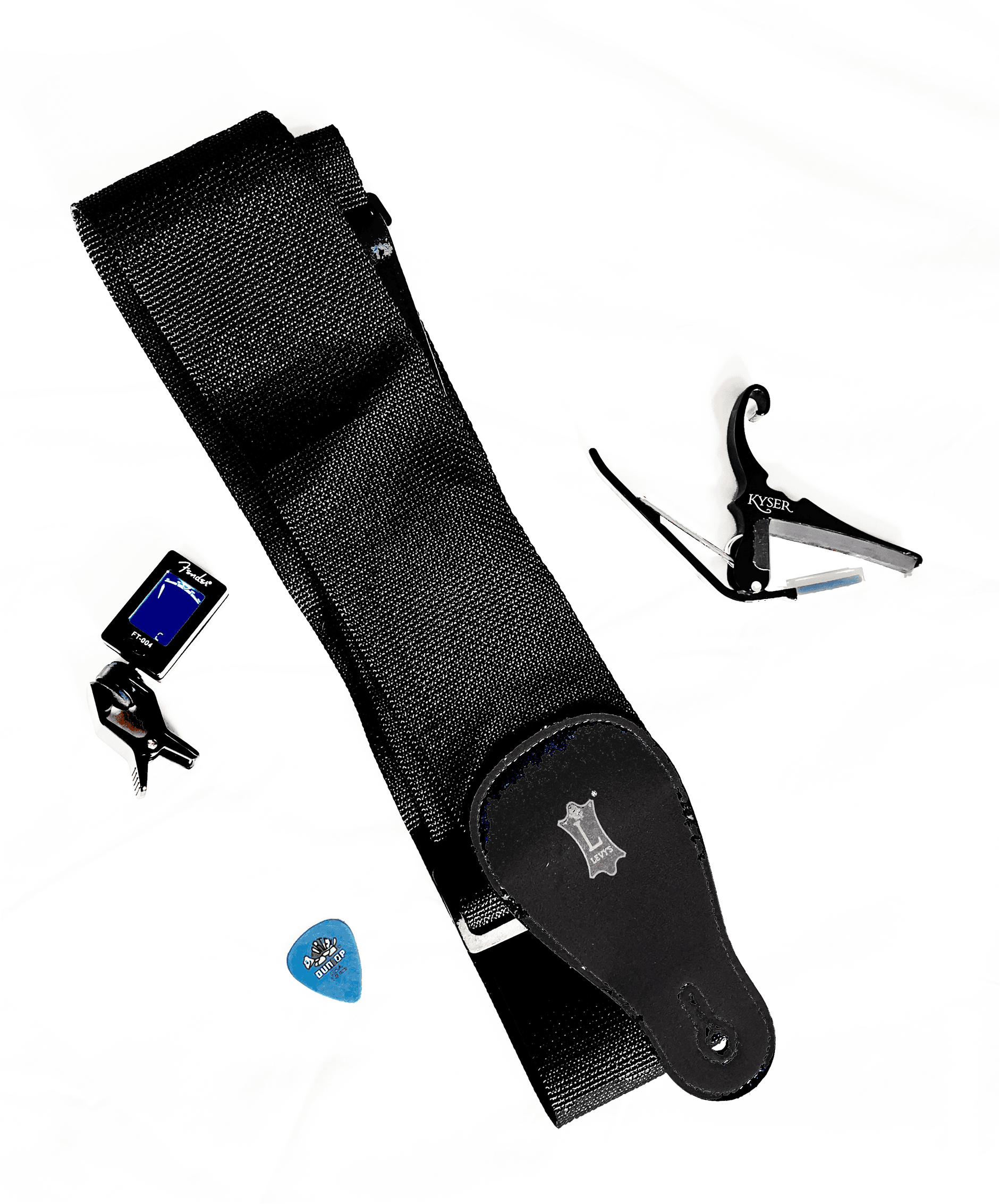 Whether you ultimately decide on an acoustic or an electric guitar, there are a few accessories you will probably want to include with your purchase as they make playing the guitar even better if not easier. Not all guitars come with a case.
Whether you ultimately decide on an acoustic or an electric guitar, there are a few accessories you will probably want to include with your purchase as they make playing the guitar even better if not easier. Not all guitars come with a case. 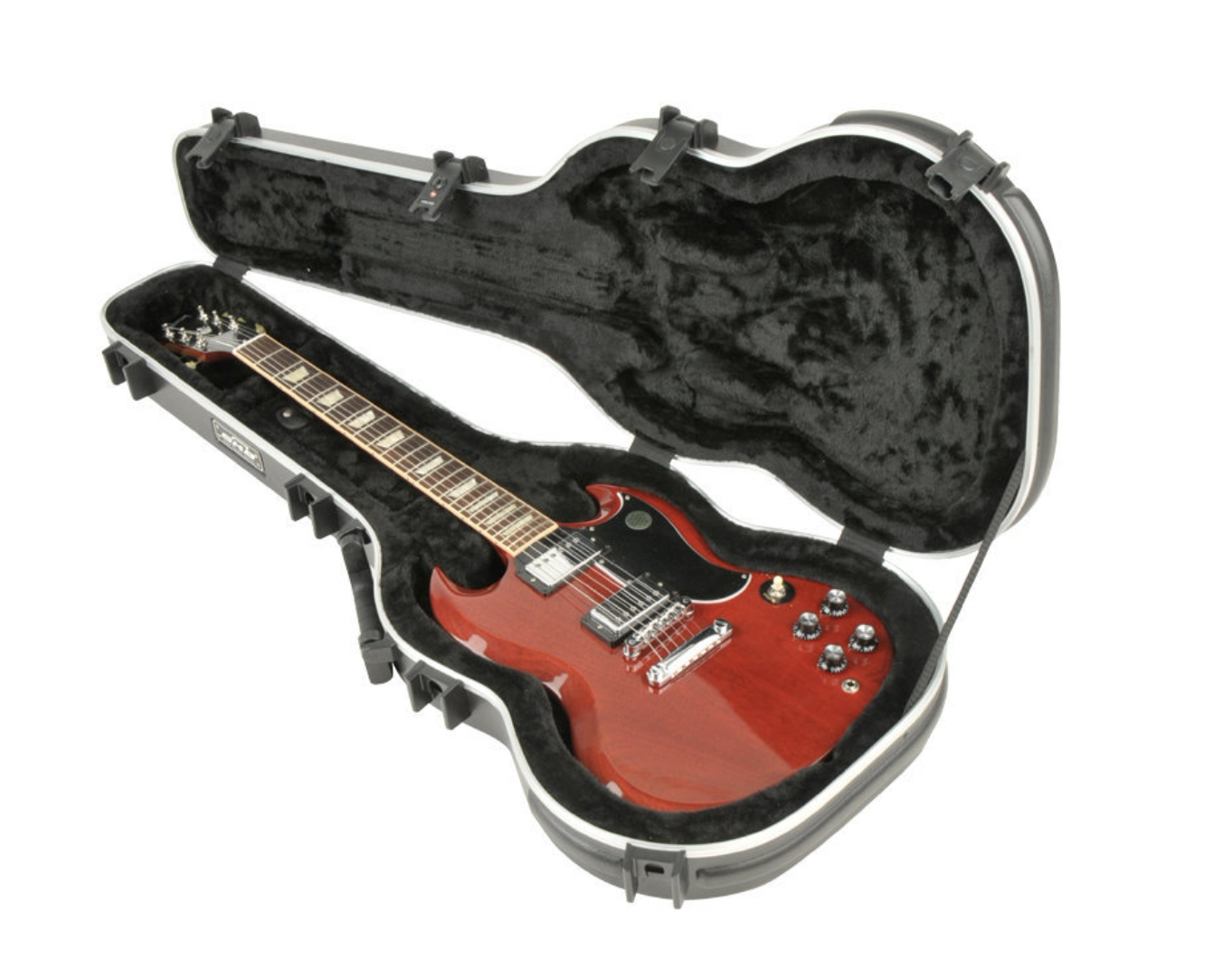 Some may only come with a soft carrying case. If you ever plan to take your guitar anywhere, you will want a proper hard case. You will likely find that when you start playing, you are always sitting and the guitar rests on your knee. That was how I learned. If you ever want to play while standing, you should start to practice that way as soon as possible and you will need a guitar strap to achieve this. It isn’t a bad idea to use the strap even if seated to get used to it around you.
Some may only come with a soft carrying case. If you ever plan to take your guitar anywhere, you will want a proper hard case. You will likely find that when you start playing, you are always sitting and the guitar rests on your knee. That was how I learned. If you ever want to play while standing, you should start to practice that way as soon as possible and you will need a guitar strap to achieve this. It isn’t a bad idea to use the strap even if seated to get used to it around you.
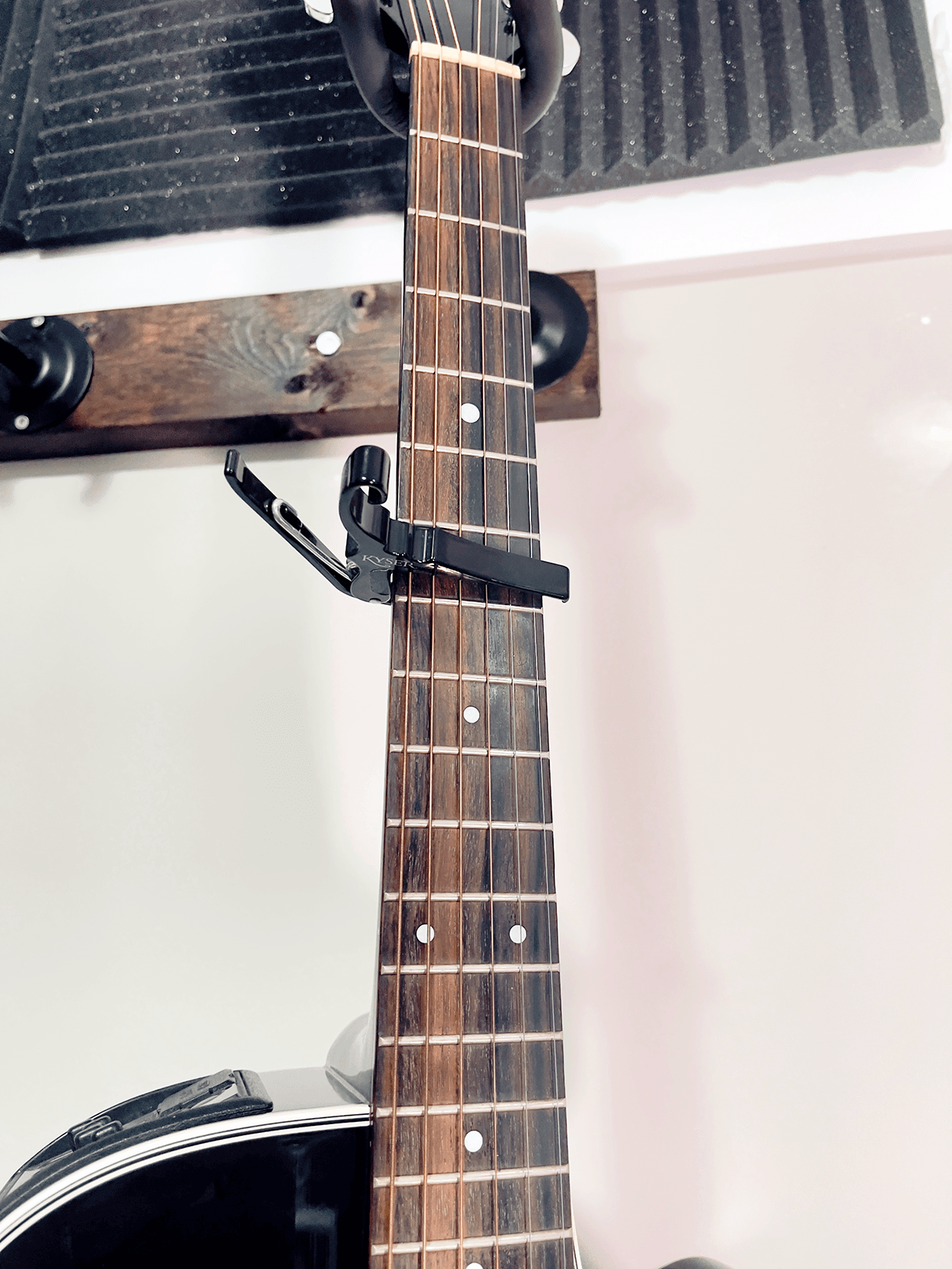 You may want to change the key of what you are playing on your guitar without retuning all of the strings or having to transpose the chords. A capo can do this for you. It simply rests across all of your strings at a certain fret on the neck which increases the string tension causing each string to sound higher than it did before. You use the capo as your new nut and play everything in the same shape as you normally would. These take seconds to employ and can absolutely change the entire feel of what you are playing. Some of your favourite songs like Wonderwall by Oasis, Free Fallin’ by Tom Petty, or The Beatles Here Comes the Sun require a capo. This is also very nice to have if playing with singers as you can quickly adjust your songs to their vocal range.
You may want to change the key of what you are playing on your guitar without retuning all of the strings or having to transpose the chords. A capo can do this for you. It simply rests across all of your strings at a certain fret on the neck which increases the string tension causing each string to sound higher than it did before. You use the capo as your new nut and play everything in the same shape as you normally would. These take seconds to employ and can absolutely change the entire feel of what you are playing. Some of your favourite songs like Wonderwall by Oasis, Free Fallin’ by Tom Petty, or The Beatles Here Comes the Sun require a capo. This is also very nice to have if playing with singers as you can quickly adjust your songs to their vocal range.
You will likely play your guitar with a pick although classical guitar is often played only with fingers and thumb for plucking and strumming. Picks come in different thicknesses and are really a preference for each player. Try a bunch out and see which feels most comfortable for you. Also, always have spare sets of strings around because one will break and it is usually at the exact moment you don’t want it to, like when you don’t have an extra set.
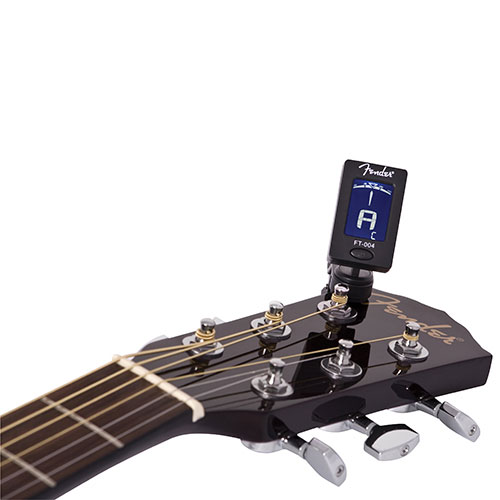 Few have a good enough ear to be able to tune their guitars without help. There are several kinds of tuners available from ones you plug into (for electric guitars), that clip on to your guitar and sense the vibrations, or that produce a sound for you to match. And for those rare moments when you aren’t playing your new guitar, don’t leave anything to chance by leaning it against wall or sofas. Get yourself a proper stand. Not only will it protect your guitar from falling over, it also highlights it like the majestic work of art that it is.
Few have a good enough ear to be able to tune their guitars without help. There are several kinds of tuners available from ones you plug into (for electric guitars), that clip on to your guitar and sense the vibrations, or that produce a sound for you to match. And for those rare moments when you aren’t playing your new guitar, don’t leave anything to chance by leaning it against wall or sofas. Get yourself a proper stand. Not only will it protect your guitar from falling over, it also highlights it like the majestic work of art that it is.
Find the right guitar for you
While this is only an overview of the basics to consider, I hope it helps you as you get ready to buy your first guitar or upgrade to a more advanced model. At the least, it may have got you to think about something that you hadn’t considered before. You can find acoustic and electric guitars, as well as guitar accessories at Best Buy online.



